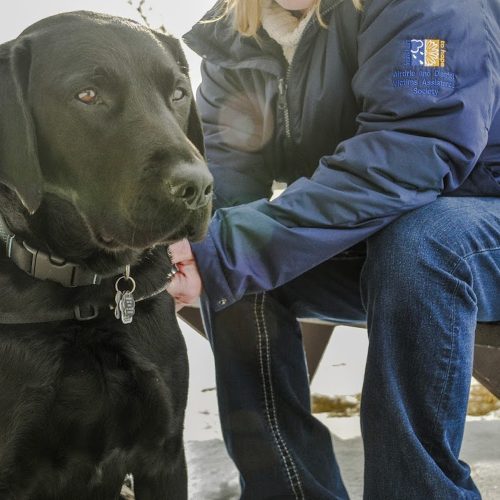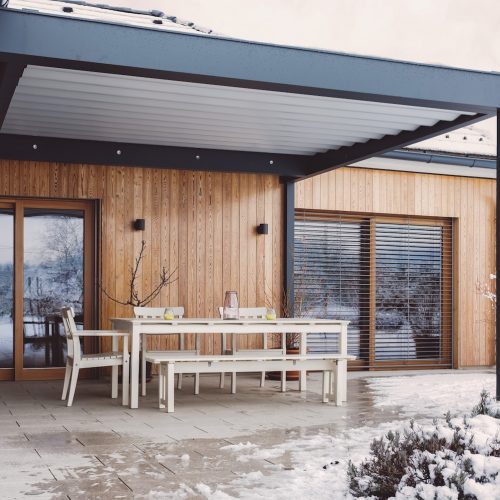With enhanced COVID-19 restrictions extended until Jan. 21, many Airdrie residents are getting outdoors for some recreation.
Skating, sledding, cross country skiing and walks in local parks are all occupying residents’ time while they wait for local businesses and offices to reopen.
But with temperatures hovering around or above zero degrees Celsius, it is important to consider ice safety when getting outside.
The City of Airdrie Parks department maintains a total of six boarded rinks, four snow bank rinks and three natural ice surfaces.
Snow bank rinks:
- Fletcher Regional Park
- Town and Country Centre
- Plainsmen Arena/Jensen Park
- Windsong (Green space between Windstone Ave & Windstone LI)
Boarded rinks:
- Bayside Dr.
- Big Springs Cr SE green space
- Chinook Winds Regional Park
- East Lake Regional Park
- Kings Heights Dr.
- Monklands Regional Park
The City parks department floods outdoor rinks once the temperature drops to and maintains a constant -10 degrees Celsius for a minimum of one week.
The outdoor rinks on the above list are available for all residents to use and enjoy and are available on a first-come first-served basis. The parks department does not book out the rinks or ice surfaces. Remember to always skate with a partner, wear appropriate warm clothing and safety gear.
During winter months, natural surfaces will be plowed only when they measure between 10 to 12 inches.
Ponds and Creeks
The Airdrie Fire Department (AFD) would like to remind everyone that ice on ponds and creeks may be tempting to play on but playing on ice is very dangerous.
“Stormwater facilities, often called stormwater ponds, are not safe for skating or any other winter activity,” according to the City of Airdrie website.
“The surface may look solid, but stormwater flows underneath the surface due to snowfall, snowmelt, road clearing and salting operations. Runoff typically contains concentrations of salt and/or warmed water, which can quickly thin ice surfaces.”
There also may be sudden water level changes under the ice, resulting in unstable and unsafe conditions.
Many factors can affect ice thickness and strength including:
- Fluctuating temperatures
- Depth and size of body of water
- Flowing water under the ice
- Logs, rocks and docks in the water absorbing heat from the sun
The AFD warns that any of these factors can cause the ice to weaken and become dangerous.
“In order to stay safe, it is important to talk with your children about ice safety,” according to airdrie.ca
“It is also important to keep your pets on a leash when walking them near natural ice surfaces.”
Ice Rescue
Airdrie has a number of bodies of water and the AFD provides ice rescue services within the city limits. Airdrie firefighters receive specialized training to perform safe and efficient ice rescues.
Performing a safe ice rescue requires manpower, specialized equipment and teamwork. The AFD uses ice rescue suits which keep the rescuer dry and provides both insulation and flotation. Numerous devices are also used to aid in securing and providing flotation for the victim.
Ice strength is determined by a number of factors such as air temperature, wind, ice thickness, water movement and chemistry. It is difficult to determine the strength of ice by simply looking at the surface. Always use caution. If you come upon a person that has fallen through the ice call 911.
Ice Safety Tips
Did you know ice thickness should be:
- 15 cm for walking or skating alone
- 20 cm for skating parties or games
- 25 cm for snowmobiles.
If you get into trouble on ice and you’re by yourself:
- Call for help.
- Resist the immediate urge to climb back out where you fell in. The ice is weak in this area.
- Try to relax and catch your breath. Turn yourself toward shore so you are looking at where you entered onto the ice. The ice is more stable close to shore.
- Reach forward onto the broken ice without pushing down. Kick your legs to try to get your body into a horizontal position.
- Continue kicking your legs, and crawl onto the ice.
- When you are back on the ice, crawl on your stomach or roll away from the open area with your arms and legs spread out as far as possible to evenly distribute your body weight. Do not stand up! Look for shore and make sure you are crawling in the right direction.
When you are with others on ice
- Rescuing another person from ice can be dangerous. The safest way to perform a rescue is from shore.
- Call for help. Consider whether you can quickly get help from trained professionals (police, fire fighters or ambulance) or bystanders.
- Check if you can reach the person using a long pole or branch from shore – if so, lie down and extend the pole to the person.
- If you go onto ice, wear a protective floatation device and carry a long pole or branch to test the ice in front of you. Bring something to reach or throw to the person (e.g. pole, weighted rope, line or tree branch).
- When near the break, lie down to distribute your weight and slowly crawl toward the hole.
- Remaining low, extend or throw your emergency rescue device (pole, rope, line or branch) to the person.
- Have the person kick while you pull them out.
For more information on the condition of Airdrie ice surfaces, click here.
stacie@frogmediainc.ca






